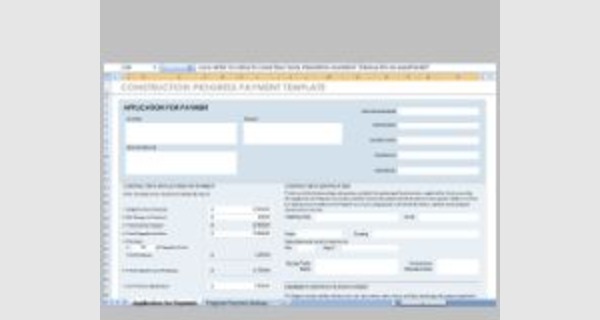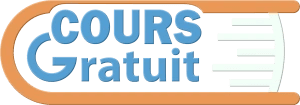Excel template for customer payment tracking

Customer Payment Tracking : How to Manage Invoices and Payments
Article written by : Deeksha Negi
Tracking payments and invoices are important to the success of a business, as the cash flow a business has to pay its expenses is affected by the amounts paid or received. A business should use professional customer payment tracking software to be able to manage invoices and payments. Good software will be easy to access remotely and come with a dashboard that displays a company’s sum of unpaid and paid invoices, profits and expenses.
Nowadays, the following five steps are followed from managing payments and invoices:
- Choose the accounting program that suits you best
- Implement best practices for invoicing
- Follow-up the late invoices
- Run reports frequently
- Use the program to help establish future monetary plans
Let's discuss the above-mentioned five steps in detail and explore how to find the right accounting application for you.

Choose The Accounting Program That Suits You Best
The right accounting tool should be a solution for your company’s accounting requirements. Choose accounting software that suits your business needs. The following are some basic questions you should ask yourself when you are looking for accounting software for your business requirements:
-
Can you access/use the software remotely?
You wouldn’t want an app that you have to download to your computer or another device. That means you would only be able to access your accounting app only when you have that device. In these pandemic times, you would want an app on your mobile device, software that allows you to access or use information from your home PC or anywhere.
-
Is the software user-friendly?
User-friendliness is another feature you might want to look for. Ask yourself if you're able to understand how to navigate through the app/website? Furthermore, you would want to check if the terminology used in the software can be understood by accountants/experts as well as naive users. In other words, the customer payment tracking system should be simple to use.
-
Can multiple users access/use it?
For instance, consider yourself administering your business, consider allowing all staff members to enter their expenses. By doing this, you will save your time or the time of the employee designated to do this work. Hence, it is mandatory to ensure the accounting application allows access to multiple users. Moreover, the program should have a functionality to limit access to some features or users.
-
Is the software user-friendly?
User-friendliness is another feature you might want to look for. Ask yourself if you're able to understand how to navigate through the app/website? Furthermore, you would want to check if the terminology used in the software can be understood by accountants/experts as well as naive users. In other words, the application should be easy to use.
- What are the unique functionalities provided by the software?
It’s important that using the accounting application you should be able to check off payments and produce invoices. Apart from this feature, what other features are you looking for? Can you classify your expenses? Will you be able to access the information remotely? Can you generate reports like loss and profit reports? Will credit card payments be accepted by the software? Can you automatically create recurring invoices or do estimates on the software? You should consider every feature of the program and see if they match your company’s requirements.
- How secure is your data?
Your business’ financial information is crucial and should not be given away to just anybody. You would want to check what firewalls and encryption does the program employ?
- Is it cost-effective?
It's not about cheap software but it's about if it's worth the money? Most of the times, the time you spend manually creating invoices or recording transactions is time-consuming and makes you compromise on other crucial work. Therefore, it is important to consider the worth of that time against all the attributes the program offers, and the cost per month, and then decide if it is worth the cost.
- Does the tool offer a free trial?
A good way to get an idea if the software will do what it says and meet your requirement is to use its trial version before committing to buying it. Most software gives you an option to sign-up for the free trial (7-day, 30-days, 6-months, etc) and experiments with its features. You can sign-up and load some values in, or try the invoice/credit note templates. You can make a test client account on the accounting software and do actions like creating a recurring invoice, accepting credit card payments etc. It is recommended you ask your staff members to try it too and provide you with feedback after using the program. Once you're sure you've used all the features and it is the right one for you, you can go ahead and purchase the pricing package that suits you.
- What are the pricing tiers?
Possibly someone suggested the program to you and possibly suggested the cost they are paying for it. Let's say the monthly charges sounded too expensive for your company. But you must consider that most of the good accounting applications come with different pricing packages. If your company has a small clientele, and minimal accounting requirements, probably the customer payment tracking tool that suits your needs and offers a basic or standard plan. Therefore, when researching the various software, go and check the pricing packages on the accounting application and check if there is a package with a price that will work for your business.
- Check customer reviews of the accounting program
What the administration of other companies have to say about the application you’re interested in? This is particularly crucial because it will tell you how the accounting program works and the company supports their customer and handle user issues.

Implement Best Practices For Invoicing
An accounting program will provide a guide for you to create invoices. This is especially helpful in that the system will always generate a new invoice number, and you will be reminded when the payments are expected.
Though this makes the process simple, you must make sure you enter detailed and precise information into the software. This might seem like a piece of obvious and not-so-important information but these details could be very important if an invoice goes unpaid.
Therefore, when you are entering the information into the fields on an invoice, it is advised you do the following:
- Ensure to enter a detailed description
Make sure every invoice has a detailed description. For instance, do not feed inadequate information in the description section of an invoice, or just put the client’s PO number there. Be precise. Both you and the client should be able to interpret this invoice at a glance in the future.
- Check your details are correct
You have been working on the application for a while, but you have relocated or changed your telephone number. Ensure to update the company's new details. Having all the information as precise as possible on your invoice is mandatory. This will speed up accounting because it will reduce the chance of any sort of confusion at the customer’s end, or the customer's accounting staff.
- Put the correct due date on the invoice
Regularly an application will automatically determine a due date for when the payment is due to you. Ensure it’s when you expect payment. Incorrect due date can cause issues at your as well as your client's end and it can delay you getting your money.
Follow-Up The Late Invoices
You will be notified when a payment is late if you are using a decent program. Some programs will create and send out emails to remind customers of the payments. However, often than you think these emails would be ignored. The best way is to call the client and communicate about the payment. If the person can’t be contacted, send a follow-up email with the invoice attached. This will help the customer speed up the processes.
Run Reports Frequently
After you have the customer payment tracking software for your business, ensure you run regular reports which include “Loss and Profit Report”. This report is an especially helpful program as it sums up all the invoices to date (unpaid or paid). Moreover, it subtracts your company’s expenses to provide you with a final profit sum.
For instance, Tom’s Laptop Rental is a small laptop rental shop in Time Square, New York. The company is new and has been in service for only seven months. Tom runs the store all by himself and does all the accounting by himself too. He does this through an accounting program. He has been very careful about recording all income and expenses into the program. After this, he runs a report for profit and loss. This report shows him his total income to date is $210k and his expenditures are $150k. His profit is $60,000. Thereafter, Tom realizes he should minimize a few expenditures to maximize net profit.
Now, you can understand the value of a loss and profit report to a store owner.
Moreover, Tom can run the “Invoice Details” report which most of the tools have. This report shows the user the amount that has been paid against the amount he has invoiced. Instantly he could see the outstanding amount and the name of the company. Now, he can follow up on the amount that has been owed.

Use The Program To Help Establish Future Monetary Plans
After a while of using the customer payment tracking program, you'll be noticing patterns. You will notice that there are invoices that are constantly paid late or expenditures that may seem surprisingly high. You should notice and create notes. It is advised you make a new future financial plan. You should decide if you should amend the terms of payment for clients who constantly pay late or ways to cut expenditures by doing things differently.
